This post contains affiliate links. If you click one and make a purchase, I earn a small commission, and you earn my gratitude.
Looking for my review of The Elder Scrolls Official Cookbook Volume 2? My review for Tastes and Tales of Tamriel can be found here.
Hello everyone! Today I’m starting a new feature for the blog, where I review cookbooks I’ve owned, read through, and used. To kick things off, I’m going to go over one that’s close to my heart: The Elder Scrolls: The Official Cookbook.
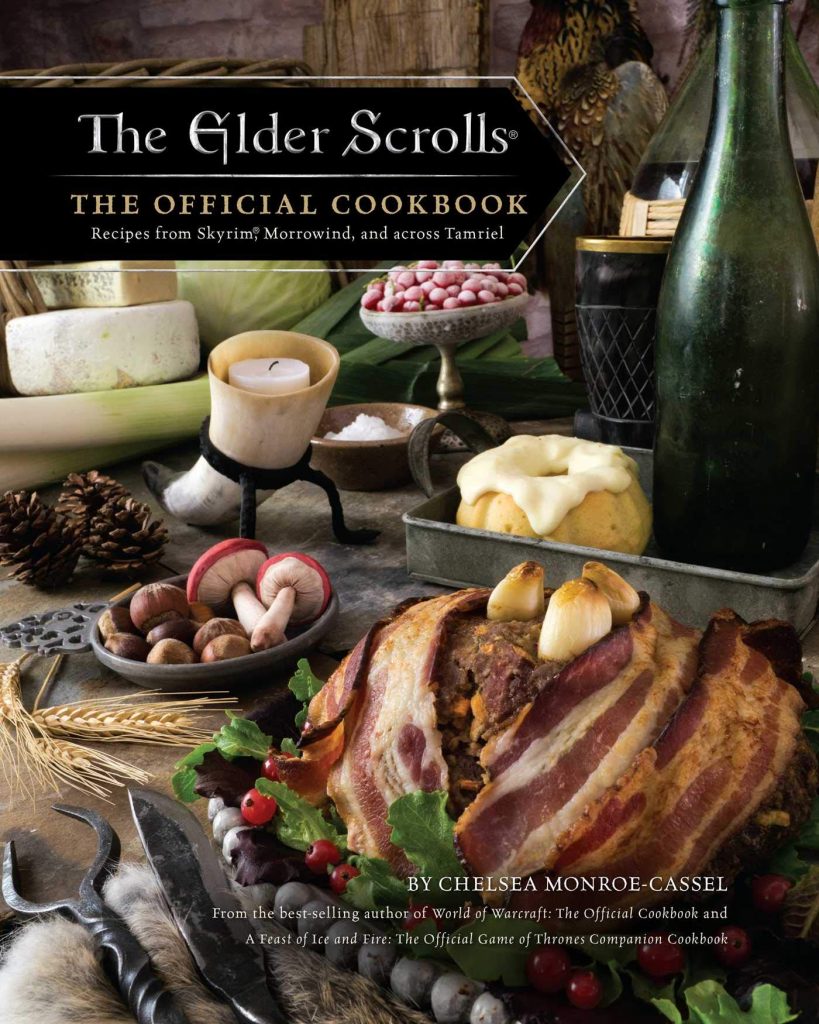
I’m a huge fan of the Elder Scrolls games. I loved Oblivion, I played a ton of Skyrim, and I play the Elder Scrolls Online nearly every day. Needless to say, I was very excited a couple years ago when my partner bought me this cookbook for Christmas. It’s a beautiful hard-cover book with glossy pages, nice high-resolution photography, and a pretty good layout.
So what’s in the book? It starts off with some fluff and lore about the races and regions in the games, and how those influence culinary culture. After that, it gets into the recipes. I haven’t made all of the recipes in the book, but I’ve made quite a few of them, so I’ll leave comments for each below. The headings are just the sections from the book.
The Basics
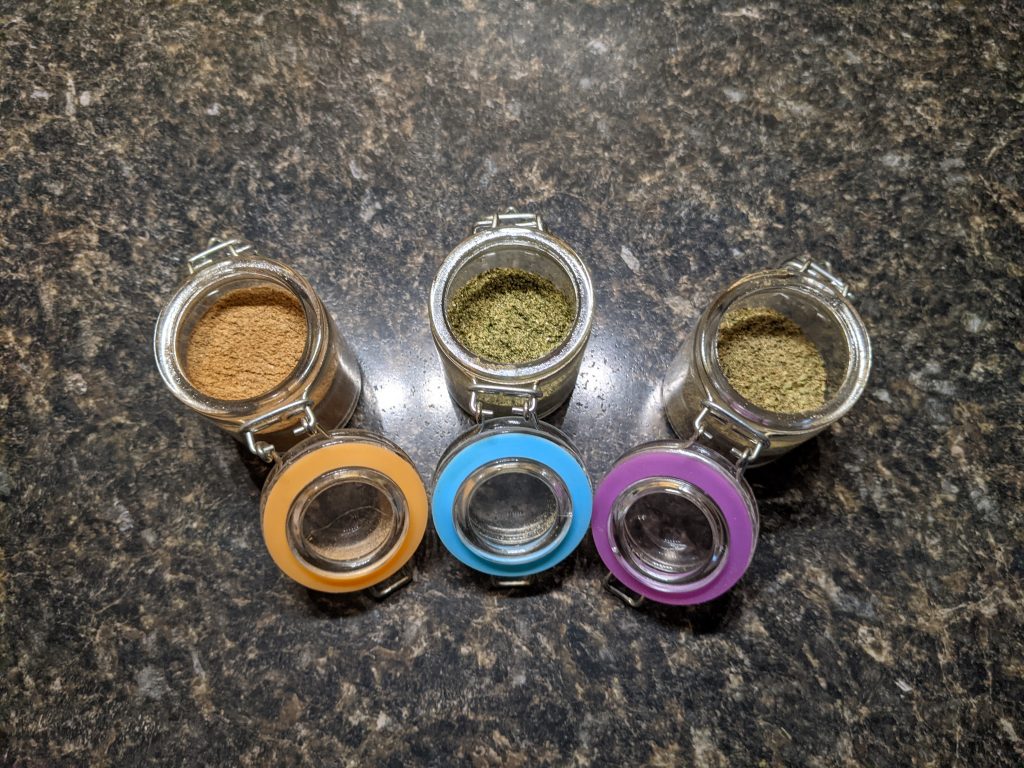
This section has a few different “core” recipes that are used as ingredients in other recipes. The three spice mixtures (pictured above) are the most common, and I actually use some of them outside of the cookbook’s recipes. They’re pretty easy:
- Nord Spices: Cardamom, Cinnamon, Mace, Cloves, and Grains of Paradise.
- Stormcloak Seasoning: Dill, Grains of Paradise, Mustard Powder, and Fennel.
- Imperial Seasoning: Marjoram, Savory, Coriander, and White Pepper.
All three of them are easy enough to make and tasty. The only tricky thing for me was finding grains of paradise (I had never heard of them before), and that wasn’t too hard.
The section also includes a custard sauce I haven’t made, a “snowberry” sauce (cranberry) I also haven’t made, a spiced butter (using Nord spices and molasses) I didn’t try, and a homemade mustard I didn’t make.
What else DID I make? There’s a mushroom sauce that uses a roux, mushrooms, and some seasonings that I really liked. It pairs well with a few other recipes in the book, and I made it with a venison dish I’ll mention later.
Finally, this section has a sweet crostata dough and a rye pie dough, both of which I’ve made, and both of which are pretty serviceable.
Sides, Starters, & Snacks
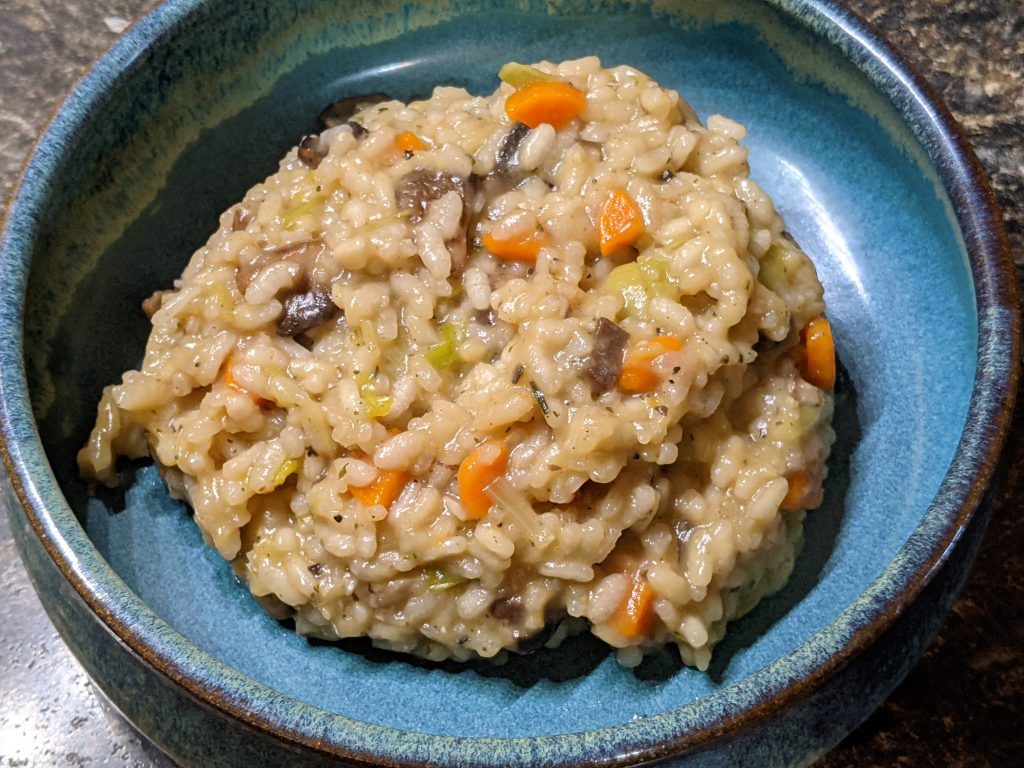
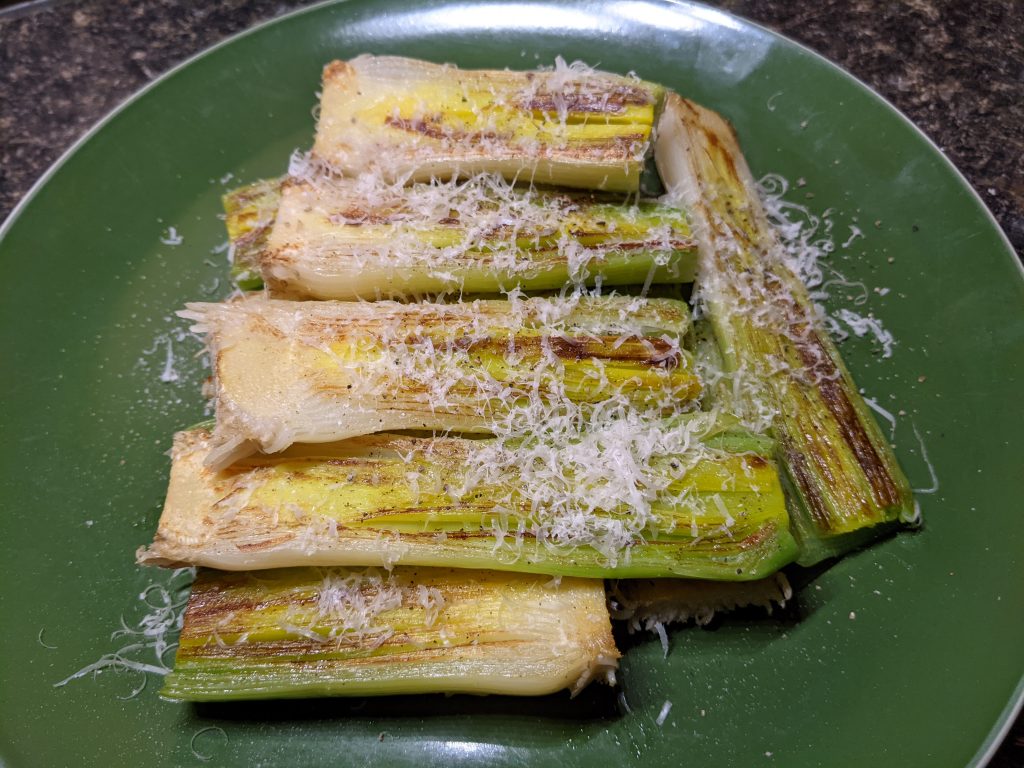
This section is all about the smaller side dishes, and is where you start to see some of the cultural inspiration. Leeks feature prominently in the games, so they’re in several dishes. The crab dip is, of course, a mudcrab dip. You know, that kind of thing. There are thirteen recipes in this section, and of them, I’ve made four.
The grilled leeks were pretty tasty. My partner didn’t like them quite as much (they can get a little mushy) but I enjoyed them. Which is interesting, since I don’t normally like the “raw onion” sort of flavor profile. Onions are fine cooked into dishes, but something featuring the flavor this prominently surprised me in how much I enjoyed it. This was actually part of my Christmas dinner!
A few of the recipes I didn’t make I can, at least, assume they’re decent. How can you go wrong with twice-baked potatoes or sugar-glazed carrots? One I’m curious about but haven’t yet worked up the will to try is the “Bosmer Bites” recipe. It’s slices of peach, spread with brie, wrapped with prosciutto, and drizzled with balsamic glaze. I like everything there, but I haven’t tried this particular combo yet.
The risotto, pictured above, is tasty every time I make it. It’s pretty easy too, just takes a lot of stirring. Redguard Rice is another dish I made once, but it was a while ago so I don’t have a picture on hand. It’s a rice and lamb “side” that works perfectly well as a main course.
The other recipe from this section I’ve made is a leek and cheese crostata. It’s basically just the rye dough with leeks, cheese, heavy cream, and some salt and pepper; plenty tasty, if simple.
Baked Goods
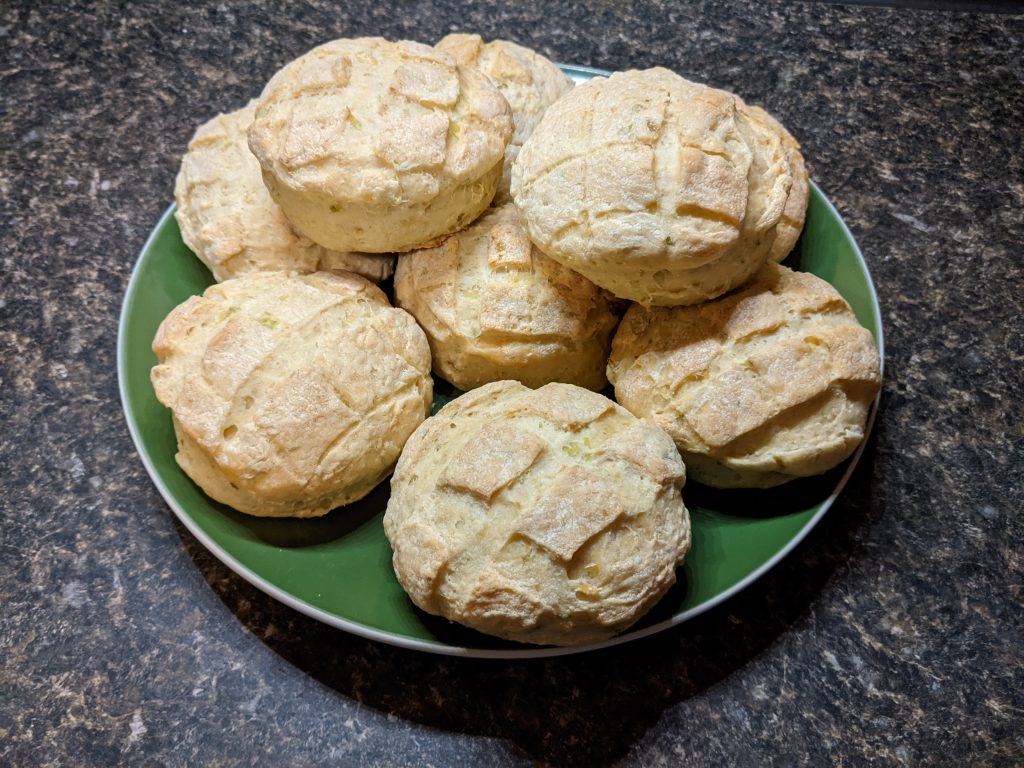
If you know me, you know I loved my baked goods. This section has a range of different breads and a few odds and ends, like rye crisps and a really dense-looking nut and seed loaf I haven’t tried out. In fact, a few of the recipes are simple enough I haven’t gotten around to trying them, like the cheese scones and the garlic bread.
The cabbage biscuits up there were another Christmas dinner addition, and they were plenty tasty. The flavor of cabbage doesn’t really come through, so it’s kind of just a dense biscuit, but they worked really well as buns for sandwiches for leftover Christmas ham.
Soups & Stews
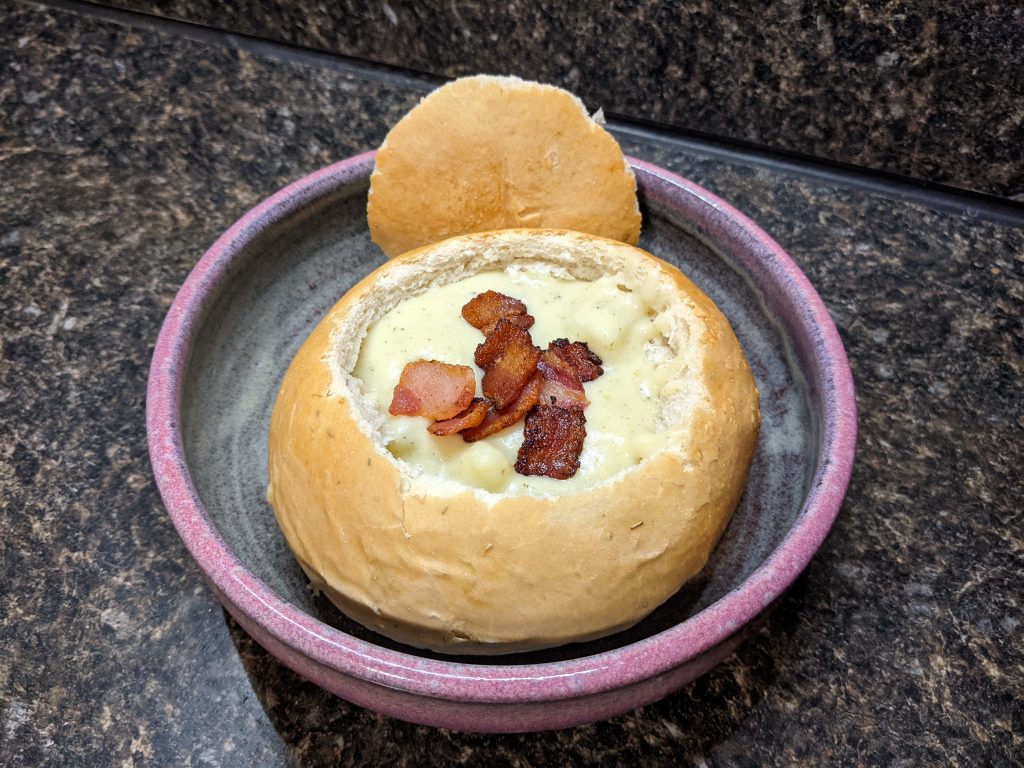
There are seven recipes in here; apple cabbage stew, clam chowder, rib stew with farro, potato cheddar soup, pea soup, vegetable soup, and potage le magnifique. Of them, I’ve only made the potato cheddar soup, but I have to say it’s probably my favorite recipe from the book so far. Rib-sticking good, thick, starchy soup, AND it goes great with my bread bowls.
If you haven’t heard of the last one, it’s a direct reference to a quest in Skyrim. See, in Skyrim, there’s a famous chef who travels the world, cooking unique meals for high-profile kings and lords. The thing is, no one knows who he is. He shows up in secret, hides his identity, and focuses solely on his food. The potage is his signature dish, and the recipe is (almost) straight from the game.
Main Courses
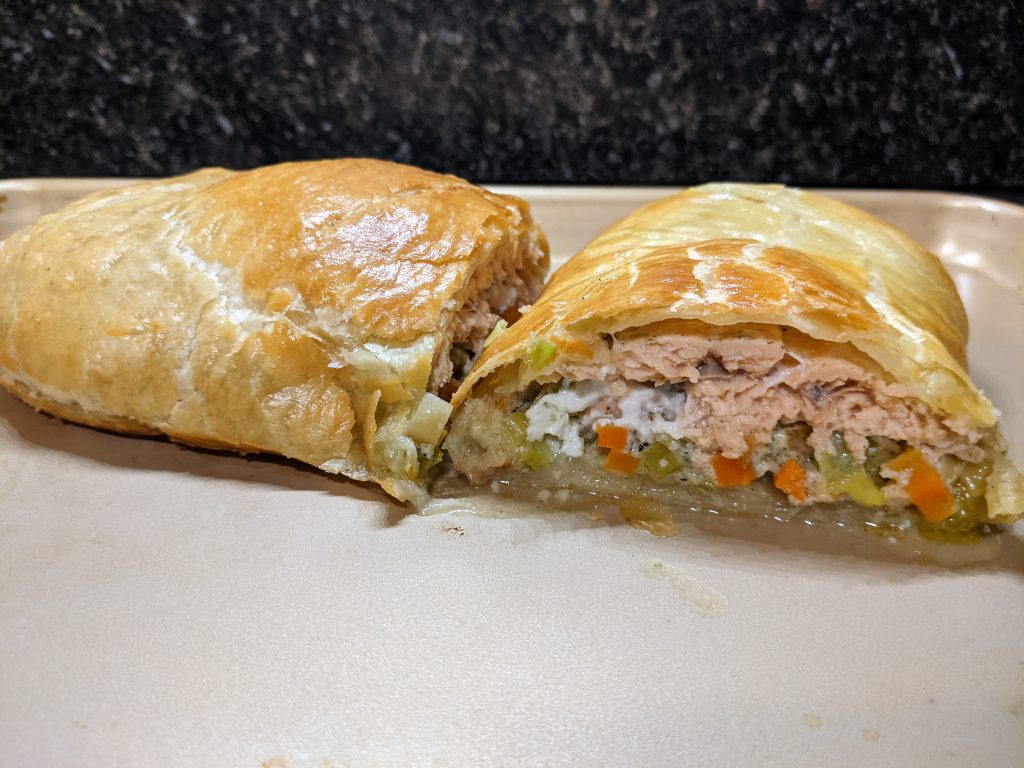
On to the main course! There are eleven recipes in this section, and I’ve only made a few of them. A couple I’m not really interested in, like the nordic barnacles (scallops), but I do enjoy the baked salmon. I’ve made it twice and it’s been excellent both times.
One of the “main course” meals is just… a white cheese fondue. I don’t know why it’s a main course, I don’t really think of fondue as a main, but that’s just me. Others, like meatballs, hand pies, and the “horker loaf” (which is just a meatloaf wrapped in bacon) are all fine.
The other main I’ve made is the Orsimer Venison. For those not down with the Elder Scrolls, the Orsimer are the Orcs. This dish is basically venison in a spicy soy-based sauce and goes really well on top of some rice.
Desserts
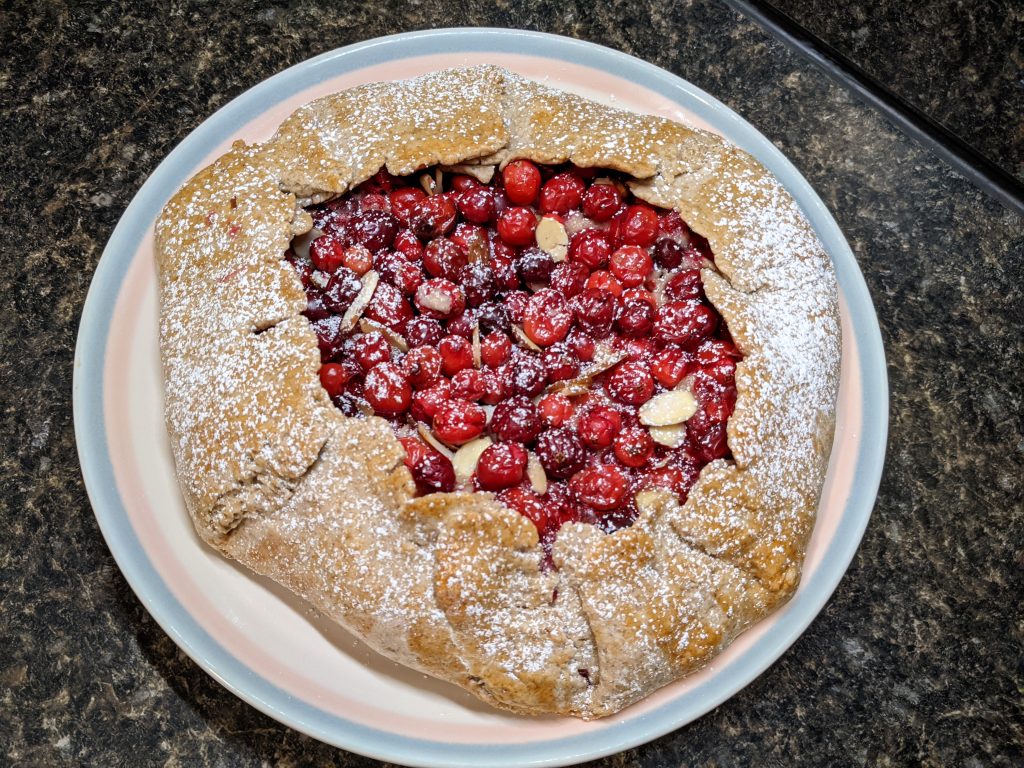
Now we’re talking! Desserts include the Elder Scrolls meme food, the sweetroll, as well as eleven other recipes of varying degrees of representation within the games. I’ve actually only made a few of them, though. I don’t have much interest in the taffy or the honeycomb brittle, for example.
My favorite is the Snowberry Crostata. It uses the sweet crostata dough and a bunch of cranberries to make what is kind of like a fruit pie or fruit tart, and is quite tasty. I’ve made it twice now, and it’s been great both times.
Oh, and those sweetrolls? Actually a little bland. They’re just a simple cake-like dough with honey as a flavor and a basic cream cheese icing. I’d probably add some of the Nord spices next time.
Drinks
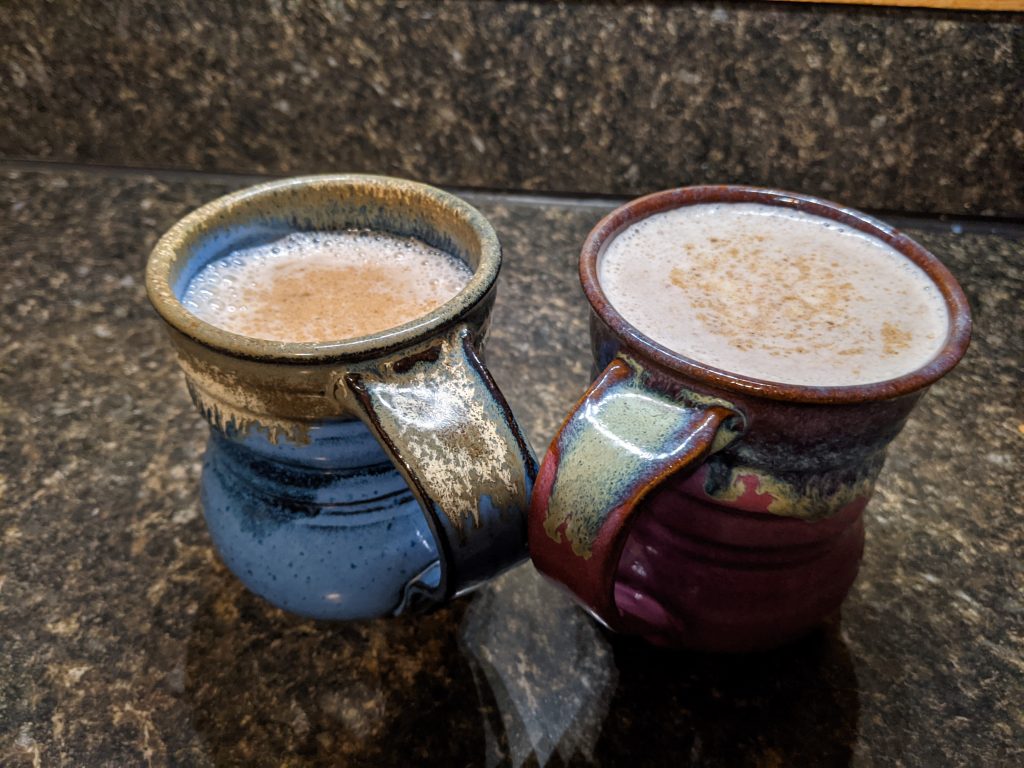
The drinks section makes up the rest of the book, and has fifteen recipes in it. Unfortunately, neither my partner nor I drink alcohol, so very few of the recipes are on the menu for us. Several of them are kinds of mead, and you have the usual fantasy fare of mulled wine and a few teas.
The one I did make is Spiced Warm Milk with Honey. It’s exactly what it sounds like; warm milk with some honey and some Nord spices mixed in. I liked it, my partner found it a little bland. It works well with almond milk too, if you’re cutting back on dairy like I try to.
Overall Impressions
I give the book a solid 4.5 out of 5. It’s a well put-together book, with high quality construction. Every page and every recipe has at least one photo of what you’re making, and every recipe has a bit of fluff about it to tie it into the game world. Obviously I haven’t made everything in it, but I’m definitely keeping it around to make more.
My one gripe is that there’s the occasional oversight. One of the recipes, for example, calls for an ingredient that it doesn’t actually say where to use in the recipe. It’s simple enough to intuit, but I can see some people being a little confused. I also question how a few of the recipes tie into the game world, but overall, I’m fine with the liberties taken.
This isn’t the first video game inspired cookbook Chelsea Monroe-Cassel has written (I made a list of some others here, though I don’t own them yet), and you can tell it’s got some experience behind it. I just think it needed one more QA pass to be a perfect little book.
If you’re interested in buying the book, you can find it on Amazon here.

